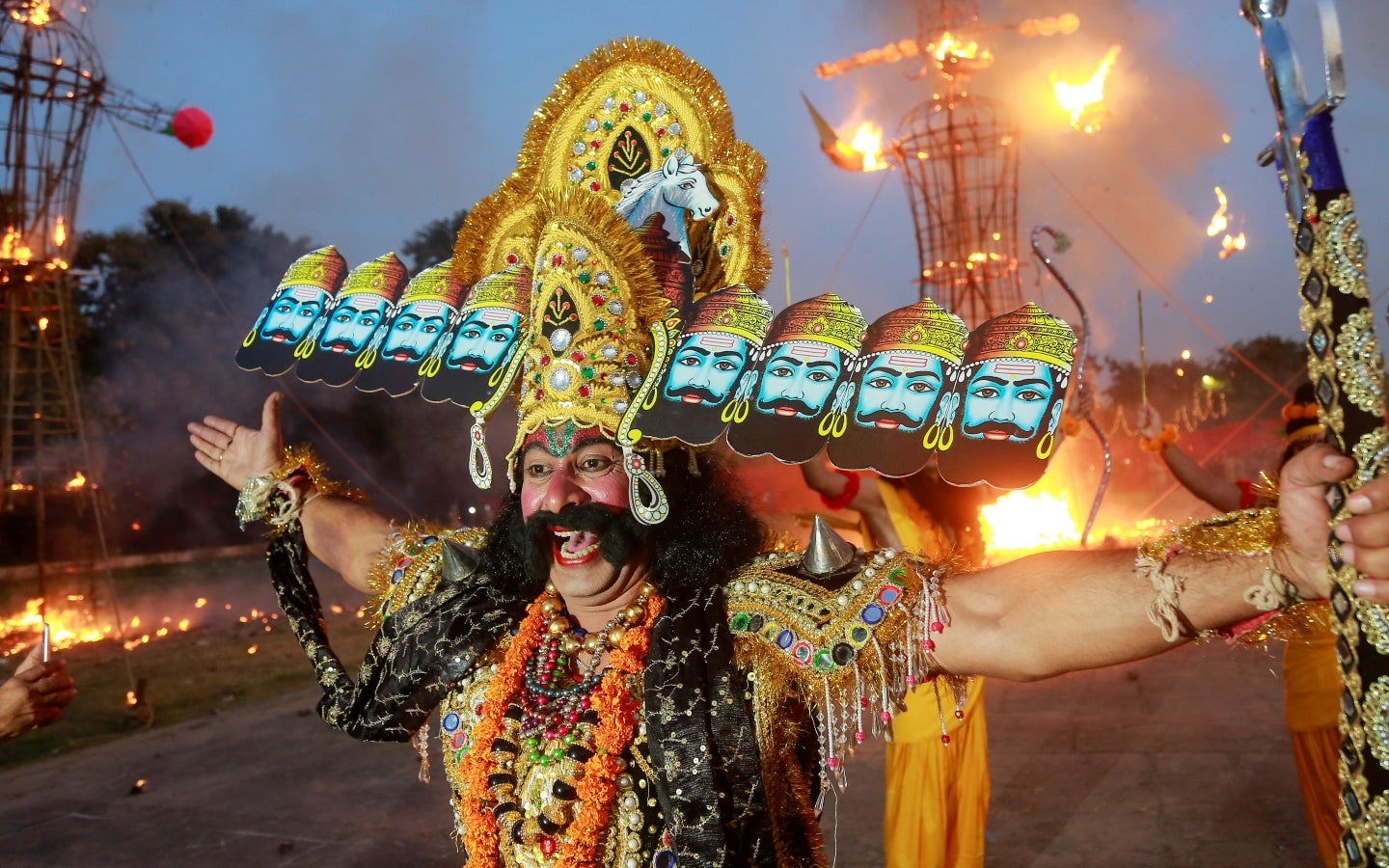Sri Lanka’s first ever satellite is named after the ultimate villain of Hindu mythology
In the Indian subcontinent, issues and events often have a mythological subtext or context, be it in politics, science, or other fields. References to tales, characters, and messages from ancient texts and scriptures can be found sprinkled beyond the modern-day international borders of the region.


In the Indian subcontinent, issues and events often have a mythological subtext or context, be it in politics, science, or other fields. References to tales, characters, and messages from ancient texts and scriptures can be found sprinkled beyond the modern-day international borders of the region.
Even then, Sri Lanka’s first ever satellite, launched on June 17, stands out. The predominantly Buddhist island nation, named the 1.05 kilogram payload Ravana-1, after the biggest villain in Hindu mythology.
In the ancient Indian epic Ramayana, Ravana is the mighty king of Lanka and the leader of the Rakshasa clan. While some dispute the assumption that the Lanka mentioned in the poem is the same as today’s Sri Lanka, it has underpinned social, historical, and political views over millennia.
Ravana, according to Ramayana’s basic plot, abducts Sita, the wife of prince Rama of Ayodhya. It climaxes in a bloody battle in which the king of Lanka and most of his family are killed and Sita rescued by Rama with the help of an army of monkeys.
In short, the ferocious Ravana is seen as the symbol of evil by many Hindus, while Rama epitomises kindness, justice, and dutifulness. Dussehra, one of Hinduism’s biggest festivals, is celebrated to mark Rama’s defeat of Ravana. In many place in northern India, festivities involve the setting ablaze of giant Ravana effigies, sometimes even in the presence of the prime minister.
“Ram rajya,” or the reign of king Rama, is even held forth by modern Indian political forces as the ideal state to aspire to. Ayodhya, a small town in the northern Indian state of Uttar Pradesh, has for the past many decades been the epicentre of the Hindu nationalist movement.
However, Ravana himself is not reviled across the board. To begin with, there are multiple versions of the Ramayana—around 300 by one account (pdf)—all of which describe the primary antagonist in various shades of grey. Often the ten-headed king is deemed erudite, just, an able administrator, and an excellent musician—an ancient string-instrument, the Ravana Hattha, is considered his invention. He is also portrayed as an ardent devotee of the Hindu god Siva.
During Dussehra, minor pockets of India even mourn for their king. Though rare, Ravana is also a preferred name for sons among sections of Indians.
Not surprisingly, this paradox also informs regional politics in the country. The late Periyar EV Ramaswamy Naicker, fountainhead of the Dravidian movement of southern India, identified Ravana as a monarch of the ancient Dravidians who mostly inhabit southern India today.
“Although EVR (Naicker) neglects to provide specific textual references, he begins his praise of Ravana by listing the virtues that Valmiki attributes to Ravana: Ravana has mastered the Vedas and sastras, he protects his family and kin, he acts courageously, he practices bhakti, he is the beloved son of a god, and he has received several boons,” Paula Richman writes in the book Many Ramayanas: The Diversity of a Narrative Tradition in South Asia. Valmiki is the poet who wrote one of the earliest versions of the Ramayana.
In many ways, this difference in perception of Ramayana and Ravana extends to Sri Lanka. While the island nation is developing its own “Ramayana trail” to woo tourists from India, Ravana himself is a hero for Sri Lankans, especially among its minority Hindus.
All this adds intrigue to the naming of the country’s first satellite.
“Are we seeing a soft power project or subtle weaponisation of myth and religion in the context of a concerted extension of a Rāvana Trail and narrative in post-war Sri Lanka where Rāvana and large Hanuman (Ramayana’s popular monkey god) statues, which are often out of sync with the softer, gentler and smaller local aesthetics and religious sensibilities are popping up in the post-war northeast of Sri Lanka, as India extends her soft power globally and locally, while grandiose Buddhist statues are also popping up?” a columnist asked in the Colombo Telegraph a few months ago.